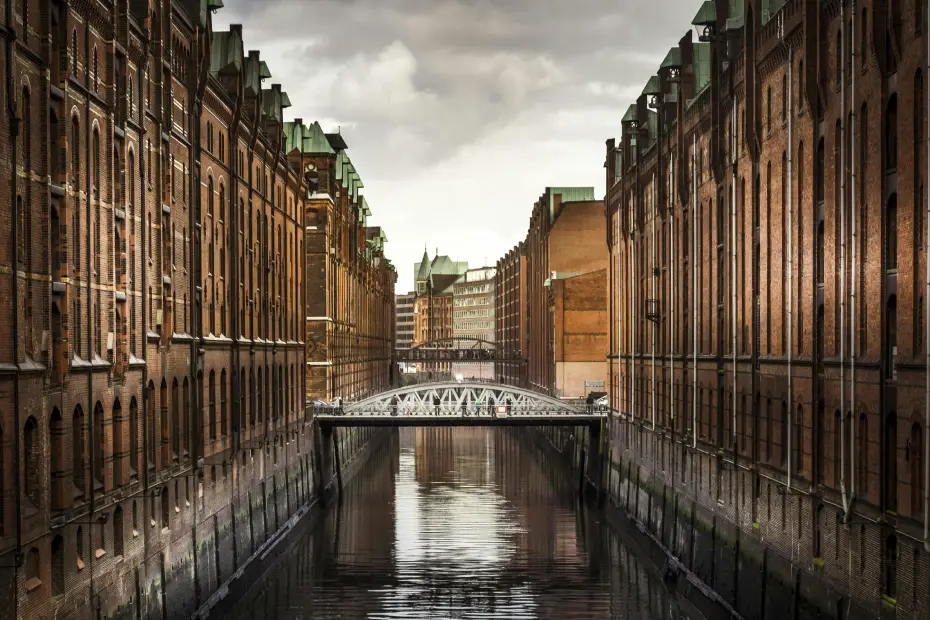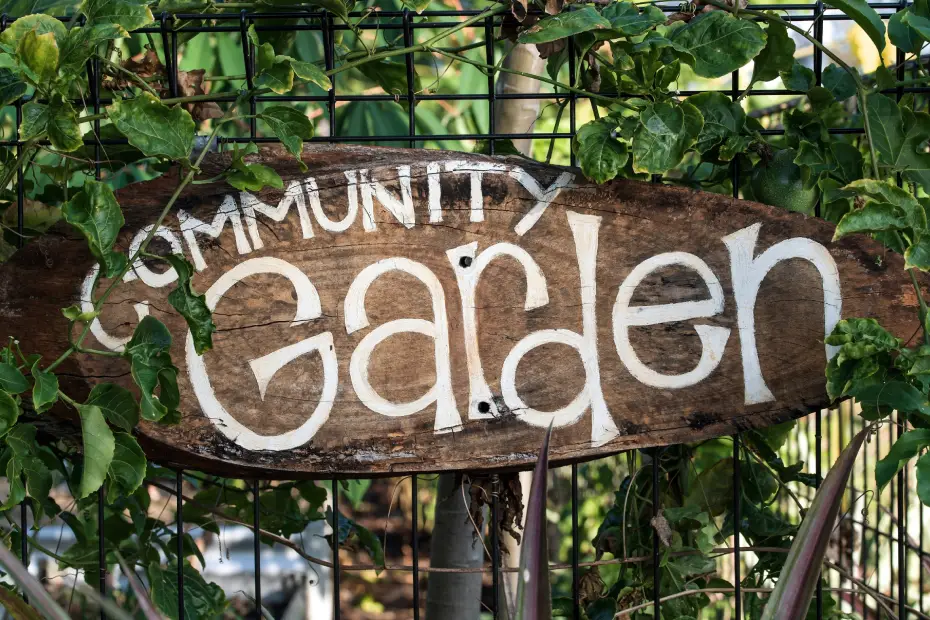Table of Contents
After industrialization and urbanization, urban rivers—once the lifeblood of vibrant cities—have frequently suffered neglect and deterioration. Once active ecosystems, they are now dead conduits for stormwater runoff and wastewater due to pollution, habitat degradation, and concrete channels. A new movement, however, is starting to recover these overlooked streams because it understands how important they are to human societies as well as wildlife. River revival is the aim, a coordinated attempt to bring back the natural beauty and ecological function of urban streams.
The Decline of Urban Rivers
The history of urbanization and industrialization is entwined with the decrease of urban waterways. Rivers became handy locations for the disposal of sewage and industrial waste as cities expanded and businesses prospered. Aquatic environments were disturbed and their natural flow patterns were further altered by the building of dams, levees, and concrete channels. These activities have had disastrous results.
Because of urbanization, there are more impermeable surfaces on the ground, including buildings and roads, which keep rainwater from penetrating the earth. More stormwater runoff enters rivers as a result, bringing with it debris and contaminants that suffocate aquatic life and worsen water quality. These issues are made worse by the disappearance of riparian vegetation along riverbanks, since trees and shrubs are essential for stabilizing riverbanks and filtering pollutants..
The ecological health of urban rivers has drastically declined as a result of these issues taken together. Fish populations have collapsed, invasive weeds have supplanted native plant species, and water quality has gotten so bad that it is unsafe for wildlife and people to enjoy. Human societies have also been severely impacted by the loss of these natural resources, which have taken away from them chances for leisure, aesthetic appreciation, and connection to the natural world.
The Benefits of River Restoration
There are several advantages to urban river restoration that go well beyond ecological considerations. We can build healthier, more livable communities that benefit wildlife and human well-being by reviving these waterways.
Ecological Benefits:
- Improved water quality: Water quality can be greatly enhanced by river restoration initiatives including pollutant reduction and riparian vegetation restoration. This protects supplies of drinking water, improves recreational opportunities, and helps aquatic life.
- Habitat restoration: We can establish a variety of ecosystems that are home to a large number of plant and animal species by eliminating artificial channels and reestablishing natural riverbanks. As a result, river ecosystems are more resilient and have more biodiversity.
- Increased biodiversity: An abundant diversity of life, ranging from fish and invertebrates to birds and mammals, is supported by a robust river ecology. Urban river restoration can support the resurgence of native species and flourishing natural communities.
Social Benefits:
- Enhanced recreational opportunities: Opportunities for swimming, kayaking, boating, fishing, and other water sports are offered by revitalized rivers. These leisure pursuits enhance mental and physical health as well as a feeling of connectedness to the natural world.
- Improved aesthetics:Restored rivers provide metropolitan landscapes a more appealing appearance and create green spaces that offer a break from the concrete jungle. Both tourism and property values may increase as a result.
- Community revitalization: Projects to restore rivers frequently act as sparks for the rebirth of local communities. Through uniting individuals to strive for a shared objective, they cultivate a feeling of satisfaction and responsibility for the neighborhood.
Economic Benefits:
- Increased property values: Research indicates that properties near green spaces and restored rivers get a greater price than properties in less desirable places.
- Tourism potential: Rejuvenated rivers have the potential to grow into popular travel destinations, attracting tourists eager to take advantage of the natural beauty and leisure activities they have to offer.
- Job creation: Jobs related to river restoration are created in a number of industries, such as construction, environmental consulting, and leisure and tourism.
The benefits of river restoration are clear: healthier ecosystems, improved quality of life, and economic prosperity. As cities around the world grapple with the challenges of urbanization and climate change, revitalizing urban rivers offers a sustainable and holistic solution that benefits both people and the planet.
Key Strategies for River Revival
River revival is a multimodal process that tackles the underlying causes of degradation and puts methods into place to improve community involvement and restore ecological function.
Addressing Pollution
One of the biggest issues facing urban rivers is pollution. A variety of contaminants can be introduced into waterways by stormwater runoff, wastewater treatment plant overflows, and industrial discharges, endangering aquatic life and posing health concerns to humans.
Important tactics for combating pollution consist of:
- Implementing stricter regulations on industrial and wastewater discharges: Strict guidelines for effluent quality must be enforced by governments and regulatory bodies, and noncompliance with the criteria will result in penalties.
- Promoting sustainable urban drainage systems:Rain gardens, bioswales, and permeable pavements are examples of green infrastructure solutions that can assist minimize stormwater runoff and filter pollutants before they enter waterways.
- Engaging communities in cleanup efforts and raising awareness about pollution prevention: River clean-ups and education campaigns are examples of community-led projects that may be extremely effective in cutting down on pollution and encouraging people to take care of their local rivers.
Restoring Habitats
One of the main causes of urban rivers’ deterioration is the loss of natural ecosystems. River ecosystems have been simplified and degraded by the construction of concrete channels, channelization, and the removal of riparian vegetation, which has decreased the rivers’ ability to sustain a variety of plant and animal species.
Important methods for rehabilitating environments consist of:
- Removing concrete channels and restoring natural riverbanks: Natural materials like boulders, logs, and native plants can be used in place of concrete to create more intricate and varied habitats for both aquatic and terrestrial species.
- Creating wetlands and riparian buffers: As natural filters, wetlands and riparian buffers remove contaminants from water and offer vital habitat for a wide range of animals. These characteristics also lessen erosion and maintain riverbanks.
- Reintroducing native plant and animal species: Fish, mussels, and plants are examples of native species that can be reintroduced to support ecological balance and biodiversity.
Enhancing Connectivity
Fish migration can be hindered, natural flow patterns might be upset, and populations of aquatic organisms can become isolated when river systems are fragmented by dams, culverts, and other obstacles.
Important methods for improving connectivity consist of:
- Removing barriers to fish migration: Dams and other obstacles should be taken down or altered wherever possible to permit fish passage.
- Creating fish passages and restoring natural flow regimes: Fish can get past obstacles with the aid of fish tunnels like rock ramps and fish ladders. Enhancing habitat connectivity might also involve changing dam operations or removing obstacles to restore natural flow regimes.
- Connecting rivers to surrounding green spaces and parks: Urban rivers’ ecological value can be increased and animal movement can be facilitated by establishing green corridors along their banks.
Engaging Communities
Local communities must actively participate in and support river recovery initiatives. Engaging residents in planning, decision-making, and stewardship activities develops a sense of ownership and encourages communities to become champions for their waterways.
Important methods for involving communities include as follows:
- Involving local residents in planning and decision-making processes: In order to guarantee that river restoration initiatives take into account the needs and goals of the people who use and live near the waterways, community involvement is crucial.
- Creating opportunities for volunteering and stewardship: Residents can directly support river restoration activities through volunteer programs like tree planting, river cleanups, and citizen science projects.
- Promoting educational programs and raising awareness about river health: Public outreach initiatives, educational initiatives, and seminars can all contribute to a better understanding of river ecosystems and spur action to preserve and restore them.
Case Studies of Successful River Revivals
Cities are proving the transforming power of river restoration all around the world. These case studies demonstrate the benefits that result from coordinated efforts to rehabilitate urban rivers.
- The Cheonggyecheon Stream in Seoul, South Korea: A huge rehabilitation project turned the once-polluted and neglected Cheonggyecheon Stream into a bustling urban oasis. A green corridor that draws millions of tourists every year was made possible by the demolition of an elevated highway and the restoration of the original riverbanks. In addition, the project raised biodiversity, decreased the effects of urban heat islands, and enhanced water quality.
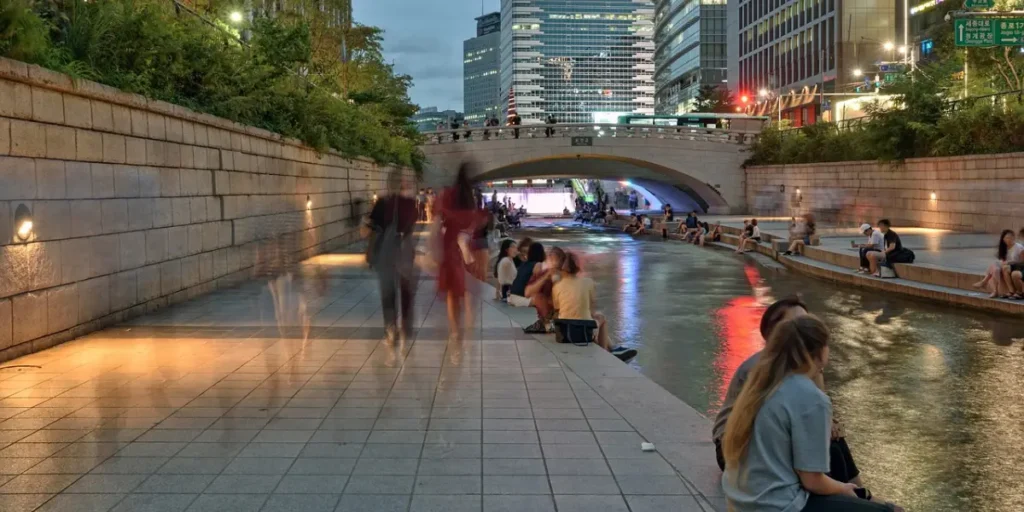
- The Emscher River in Germany: Once known as the “most polluted river in Europe,” the Emscher River undertook a multi-decade restoration project that included removing industrial pollutants, rehabilitating natural habitats, and establishing recreational opportunities. The Emscher is now a well-established boating, fishing, and hiking destination. It is a vibrant ecosystem that is home to a wide variety of fish and species.
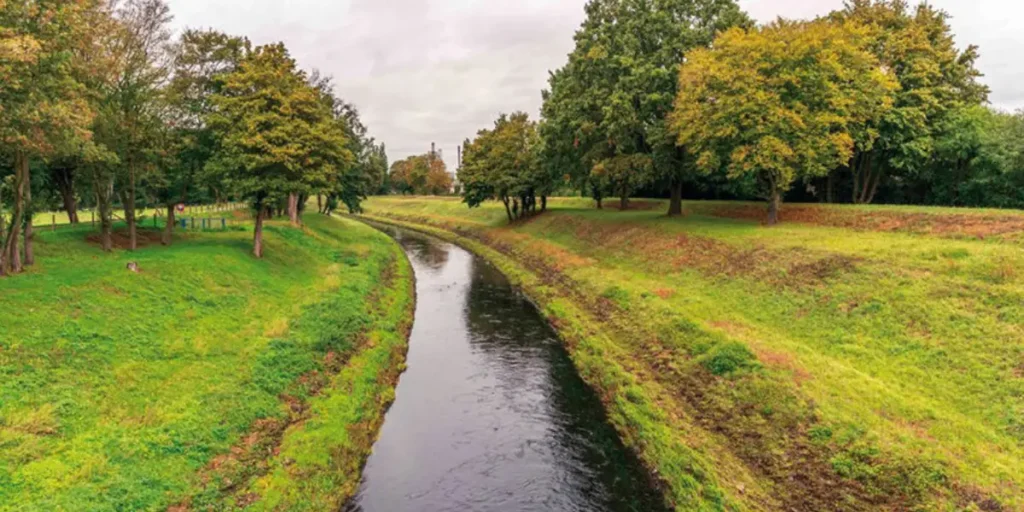
- The Los Angeles River in California, USA: The Los Angeles River is gradually changing in order to improve water quality, restore natural ecosystems, and provide recreational opportunities. The river was mainly channelized and paved over in the 20th century. The intensively urbanized environment around the river creates problems for the project, but it also offers a daring vision for reviving a significant urban waterway.
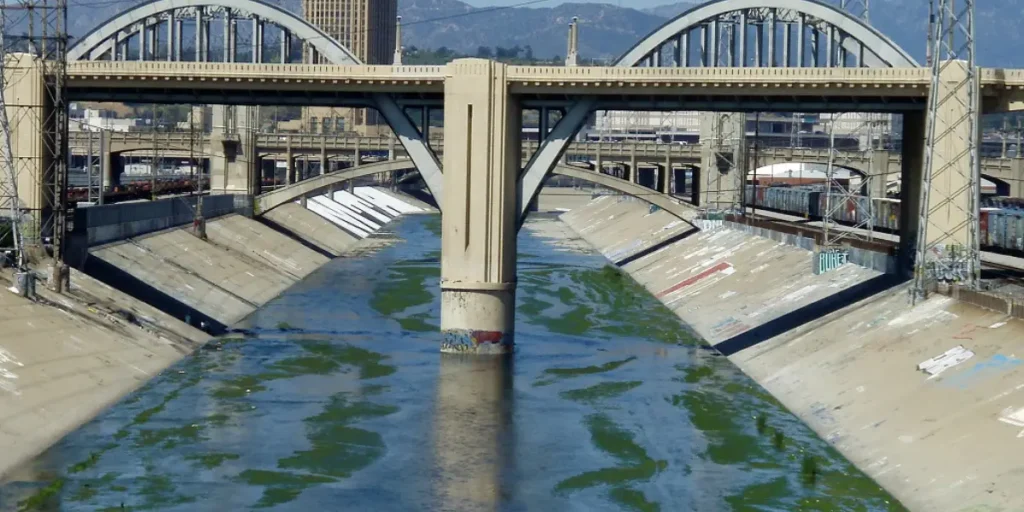
These case studies demonstrate how river regeneration has the power to change urban environments and raise both human and wildlife standards of living. They also highlight how crucial it is for various stakeholders—including corporations, NGOs, government offices, and community organizations—to work together.
Challenges and Opportunities
While the benefits of river restoration are undeniable, these projects also face a number of challenges.
- Funding limitations: Securing sufficient funds can be a significant challenge, as river rehabilitation can be costly. The funding shortfall can be filled in part by creative financing strategies like green bonds and public-private partnerships.
- Conflicting interests: Diverse stakeholders may hold divergent opinions about the best ways to use and manage rivers. Careful compromise and discussion may be necessary to strike a balance between the demands of industry, recreation, and conservation.
- Technical complexities: It can be difficult technically to restore degraded river ecosystems; hydrology, ecology, engineering, and other disciplines are required.
Despite these challenges, river revival presents a wealth of opportunities.
- Collaboration among stakeholders: Collaboration amongst a variety of stakeholders, such as corporations, NGOs, government agencies, and community groups, is frequently essential to the success of river restoration efforts. Together, these groups can accomplish common objectives by utilizing their combined resources and experience.
- Innovative approaches and technologies: Technological innovations like drones, remote sensing, and environmental DNA analysis are opening up new avenues for monitoring river health and evaluating the success of restoration projects.
- Climate change adaptation: Urban waterways may experience new difficulties as a result of climate change, including more frequent flooding and drought. By restoring natural floodplains, increasing water storage capacity, and promoting biological function, river restoration can contribute to the development of resilience to these effects.
The Future of Urban Rivers
Urban rivers depend on us all being dedicated to their care and restoration in the future. We can establish thriving, long-lasting ecosystems that promote human well-being and animals by funding river rejuvenation.
Urban rivers have the capacity to develop into cherished communal resources that offer chances for outdoor enjoyment, learning, and nature immersion. They can also be extremely helpful in strengthening urban resilience, lessening the effects of climate change, and raising the standard of living in our cities as a whole.
Now is the moment to take action. Together, let’s take on the task of river restoration and preserve these priceless waterways for future generations.
Conclusion
Urban river restoration is evidence that even the most deteriorated environments can be revitalized and healed by the human spirit. We can recover these essential rivers and establish vibrant ecosystems that benefit people and wildlife by working together to solve pollution, restore habitats, improve connectivity, and involve communities.
The advantages of river revival are extensive and varied. The benefits are evident and range from better recreational options and community rejuvenation to higher biodiversity and better water quality. Restoring urban rivers provides a sustainable and all-encompassing approach that promotes healthier, more livable communities as we confront the issues of urbanization and climate change.
The global success stories of river restoration initiatives provide optimism by illustrating the transformational potential of group effort. Let’s be motivated by these instances and dedicate ourselves to the continuous endeavor of river revitalization. We can leave a legacy of vibrant and healthy urban rivers for future generations by supporting local efforts, pushing for sustainable water management legislation, and cultivating a sense of responsibility for our waterways.
Although there are difficulties involved in river regeneration, the benefits are enormous. Let’s take advantage of this chance to revitalize our cities and build a more promising future for people and wildlife alike.
